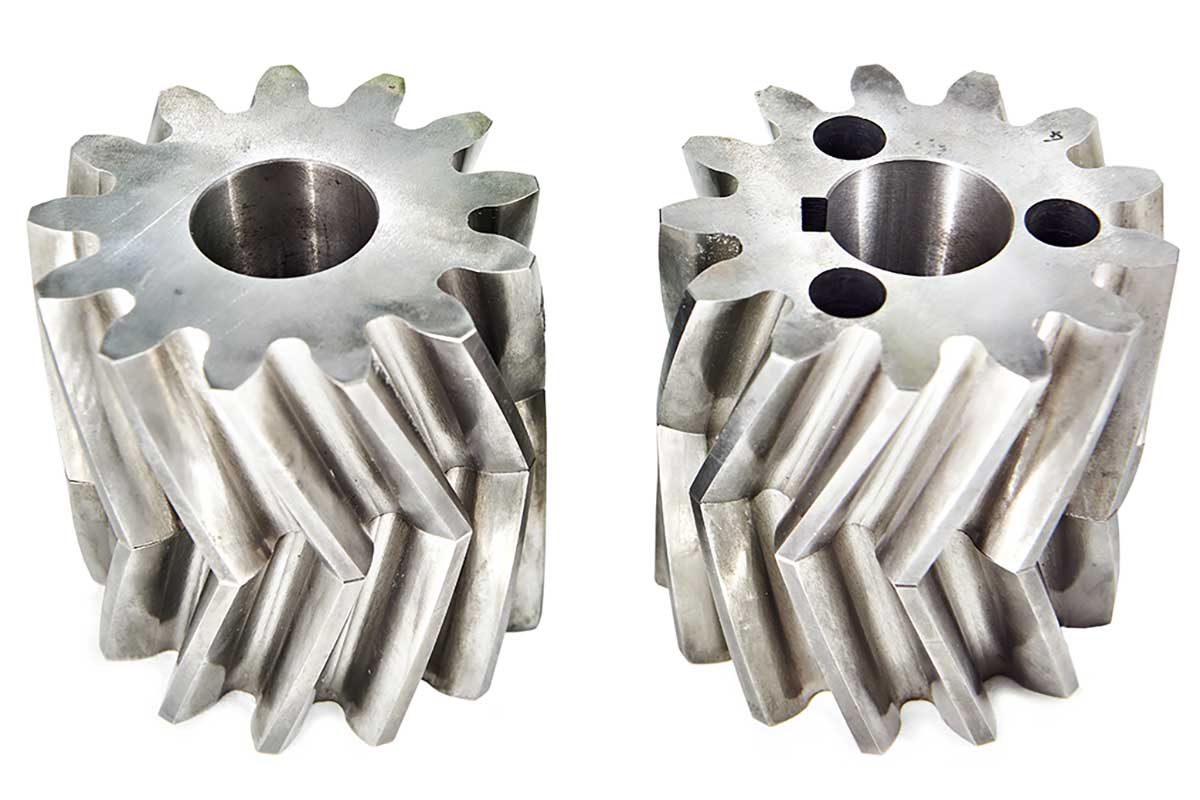
Herringbone Gears are a unique gear type. Many of us won’t get an opportunity to see one being cut, or even used. Each groove generated by teeth cutting is V-shaped, and when all the grooves are looked at collectively, it resembles the bones of the Herring fish. Hence the name Herringbone Gears. Often, these gears are wrongly addressed as Double Helical Gears, but the apex of the Herringbone Gears is the major distinguishing factor between the two types.
Those coming from a design, engineering or production background will understand and appreciate the generation of the apex which is central to both the helixes, and the unique advantages it provides the user.
Herringbone Gear cutting is an involute process, done using Sykes equipment or Sunderland gear-cutting equipment. MAAG equipment also can cut Herringbone Gears. The Sykes cutting uses a cutter which is similar to the helical shaping cutter, while the Sunderland uses a Rack type cutter for gear cutting. Usually, the helix angle is 30 degrees on Herringbone Gears. Forty-five-degree Herringbone Gears can also be manufactured. The gear-cutting process is an excellent example of kinematic synchronization for modern-day engineers to witness.
The manufacturing complexities and the limitation of not being able to grind the tooth profile of Herringbone Gear are the major reasons for limited application of these gears in modern-day scenarios.
Still, from a design perspective, Herringbone Gears provide a major advantage. They do not produce any thrust load like the simple helical gears. This eliminates the need of thrust-bearing from the assemblies where herringbones are used.
In case of a standard helical gear, as the helix angle increases, the thrust load also increases. This limits the use of the helix to 20-25 degrees only. In herringbones, due to the opposite, i.e. LH and RH helix angles, the thrust force generated gets canceled out and allows the use of higher helix angles, which helps in reducing vibration and tooth wear significantly. It also increases the load-carrying capacity of the gear tooth.
These gears are capable of self centering/ balancing up to a limited extent. They owe this property to the design and tooth form.
Herringbone Gears find applications in the oil and gas industry, the food and beverages industry, the pulp and paper industry, the pump industry, the cement industry and the steel rolling industry, among others. Herringbone Gears are specially required in high torque with relatively low-speed applications. These gears offer a very high degree of engagement between the teeth at all the times. Hence, especially in pump applications, the flow achieved is continuous, and the pump operation is completely pulse-free. The high engagement is also the reason why these gears are used where highly viscous fluids are present.
The fact that Herringbone Gears do not generate thrust load, and thereby eliminate the thrust bearing, is a major cost advantage. Heavy thrust bearing may have been required if helical gears were to be used. Along the same lines, the maintenance time, effort and cost also remain low when Herringbone Gears are used.
The author, Mihir Dilip Kannadkar, is Executive Director, SG Gears